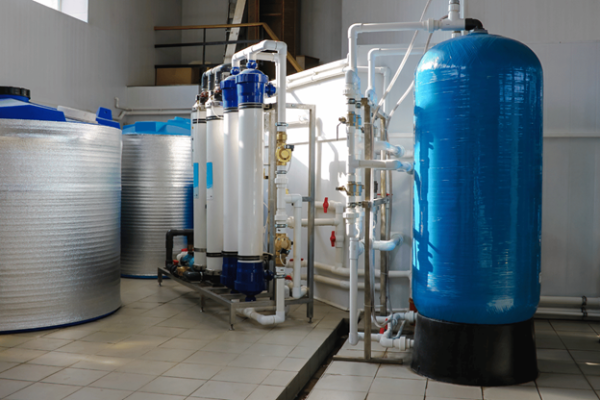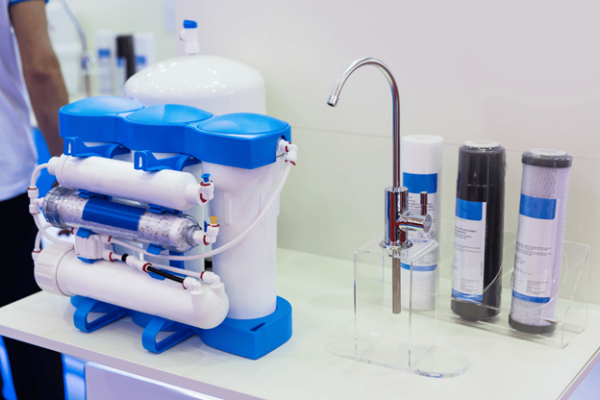Blog
What Are the Methods of Purification of Potable Water?

Access to clean and safe drinking water is crucial for a healthy life. However, water from natural sources may contain impurities that can harm our well-being. That is where potable water purification comes in. This article will explore simple methods for purifying potable water, ensuring it is safe for consumption.
- Boiling: Heating water to its boiling point kills harmful microorganisms, making it safe to drink.
- Filtration: Passing water through fine filters removes impurities, debris, and some microbes, enhancing water quality.
- Chlorination: Adding chlorine disinfects water, eliminating bacteria and viruses that may cause waterborne diseases.
- Distillation: Boiling water, collecting the vapor, and condensing it back to liquid form helps remove contaminants and ensure purity.
- UV Treatment: Exposing water to ultraviolet (UV) light disrupts the DNA of microbes, preventing them from reproducing and making the water safe for consumption.
The Crucial Role of Potable Water Purifiers
Water, often called the elixir of life, is pivotal in sustaining human life. Its purity is not merely a preference but a necessity for maintaining health and well-being. In this context, potable water purifiers emerge as indispensable guardians against impurities, ensuring the safety of individuals and their loved ones.
Understanding the Mechanism: Reverse Osmosis
Potable water purifiers employ the advanced and highly effective Reverse Osmosis (RO) principle. At the heart of this technology lies a semi-permeable membrane that acts as a selective barrier, allowing only water molecules to pass through while blocking impurities and contaminants. This meticulous filtration process guarantees water delivery in its purest form, free from harmful substances.
Step-by-Step Operation
Coagulation: The Foundation of Filtration
The purification journey begins with coagulation, which introduces coagulants into the water. These coagulants facilitate the aggregation of suspended particles, creating a mixture that is easier to separate. This initial step sets the stage for more efficient removal of impurities in subsequent phases.
Flocculation: Bringing Impurities Together
The flocculation step induces the addition of flocculants after the coagulation process. These chemicals prompt the formation of larger, easily removable chunks of impurities. Flocculation plays a crucial role in preparing the water for the upcoming purification processes by encouraging the aggregation of smaller particles.
Disinfection: A Barrier Against Microorganisms
Recognizing the potential threat posed by microorganisms, potable water purifiers incorporate a disinfection phase. This step ensures that the water is free from harmful bacteria and other microorganisms, preventing them from causing membrane blockages. Disinfection is a critical measure to guarantee purity and the long-term efficiency of the purification system.
Purification: Chemical Assistance in Membrane Filtration

The core of the purification process involves using chemicals to assist the semi-permeable membrane in removing ions. This final step transforms water into a distilled and disinfected form, making it safe and suitable for consumption. The collaborative efforts of coagulation, flocculation, and disinfection set the stage for membrane filtration to achieve the highest level of purification.
The Advantages of Potable Water Purifiers
- Health and Safety Assurance: Potable water purifiers provide a robust defense against contaminants, ensuring that the water consumed is free from impurities that could compromise health. By employing the principles of RO, these purifiers guarantee a reliable and consistent supply of pure water.
- Environmental Impact: Unlike traditional water purification methods, which may involve chemicals and generate waste, potable water purifiers are environmentally friendly. Their reliance on membrane filtration minimizes the need for harmful chemicals, making them a sustainable choice for water purification.
- Convenience and Accessibility: With technological advancements, potable water purifiers have become more accessible and user-friendly. Their convenience in delivering purified water directly to households makes them a practical and efficient solution for maintaining a safe and healthy water supply.
Potable water purifiers, operating on the principle of Reverse Osmosis, shield against impurities, ensuring individuals' health and safety. These purifiers deliver water in its purest form through a systematic process that includes coagulation, flocculation, disinfection, and purification. The advantages of potable water purification systems extend beyond health benefits, encompassing environmental sustainability and user-friendly accessibility, making them an integral component in safeguarding the purity of this essential resource.
To Wind Up
Access to clean and safe drinking water is a fundamental right, and ensuring its purification is essential for our well-being. General International Group, a leader in potable water purification systems, boasts a team of experts dedicated to delivering safe and healthy water. Our rigorously tested products, crafted by skilled engineers, prioritize your well-being at an affordable cost. Do not compromise on health – contact us today!